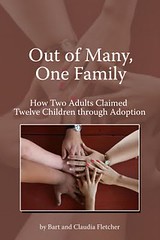A great sign appeared in the sky, a woman clothed with the sun, with the moon under her feet, and on her head a crown of twelve stars. ~ Revelations 12:1
Using this verse and ancient astrological charts, Martin theorizes that Christ, the Lion of Judah, was born on September 11, 3 BC. On that day, the sun was in position to "clothe" the constellation Virgo and the moon was positioned under her feet. In 3 BC, September 11 corresponded with Tishri 1, the Feast of Trumpet. Yom Teruah (the Day of Shouting), better known as Rosh Hashana (the head of the year), is the first month in the Hebrew secular calendar and the 7th month of the religious calendar. Do the shofar blasts herald the birth of the king? Traditionally, the first Adam is said to have been created, or born, on this day. Was the second Adam born on this day too? It was interesting to ponder. There was order that seem predestined and almost too coincidental to brush aside.
Our family attends a church which follows a traditional, Western calendar. We celebrate Christ's birth on December 25th. Because I also believe that Christ gave universal meaning to the feasts described in Leviticus 23, we celebrate those in our home too. Because our family "liturgy" includes these biblical feasts and I blog, I have met a lot people online who identify themselves as Torah observant, Messianic Christians or even Hebraic/Judeo-Christians. Some have become dear blog friends. Others, I wouldn't necessarily consider friendly. I have been accused of participating in pagan festivals for celebrating Christmas in December.
After hearing the king, they went their way; and the star, which they had seen in the east, went on before them until it came and stood over the place where the Child was. ~ Matthew 2:9
Because our planets travel at different speeds the Earth "laps" Jupiter. During that time, it appears as if Jupiter stops and then travels backwards for a time. Because of this retrograde motion, Jupiter does appear to stop in the sky. "And precisely on December 25, 2 BC, Jupiter 'stopped' in the abdomen of Virgo, the Virgin (in the middle of the constellation)." The toddler Jesus was no longer in a stable; he was in a home. According to Martin, the Magi, who like me were non-Jews, recognized the King of the Jews on December 25th. In 2 BC, Hanukkah began on December 23rd and continued eight days, ending on December 30. If he was born on September 11th, he was conceived in December. I believe life starts at conception. I think I will continue to celebrate with my church and family.










